Fig. 4.1
Improper uncapping of needle. (a) With use of proximal upper body strength the cap can release with a jerk. (b) Recoil of upper extremities can result in puncture of the hand
Solution
Stabilize the hands as shown in Fig. 4.2. Even if a sudden displacement occurs, the cap can only move a few millimeters.
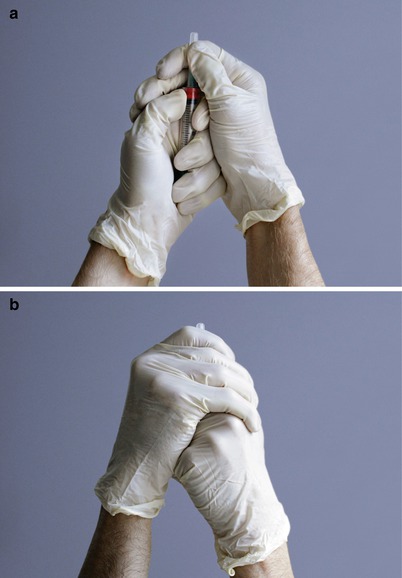
Fig. 4.2
Safe uncapping technique. Grip cap distally. Top hand is anchored to bottom hand, similar to a golfer’s grip. Gentle extension of the wrist releases the cap. (a) Front. (b) Back
Drawing Up Solution
Accidents Happen When
The hand holding the needle is not attached to the hand holding the syringe (Fig. 4.3). Fine motor control is compromised.
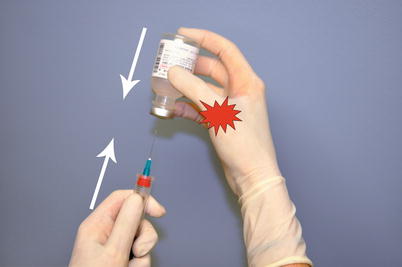
Fig. 4.3
Unsafe method of drawing up solution. Note hands are not “attached” to each other
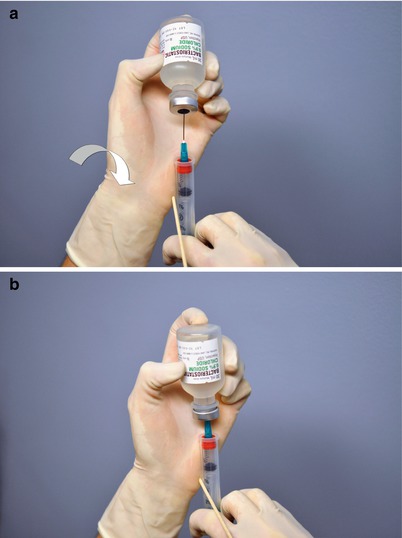
Fig. 4.4
Safe method of drawing solution. (a) Syringe rests on hypothenar eminence. Arrow shows hand bending at wrist, pivoting on the syringe. (b) Safely place the bottle onto the needle. Note that the vial is gripped at its base away from stopper (wooden applicator illustrates the immobilization of the syringe)
Accidents Happen When
A precipitated suspension of triamcinolone (or any suspension) is not adequately shaken prior to drawing up the medicine. The result is under-dosing of the current patient and overdosing subsequent patients.
Solution
Vigorously shake triamcinolone suspensions and inspect the base of the bottle for absence of residue before drawing up the medication.
Recapping the Needle
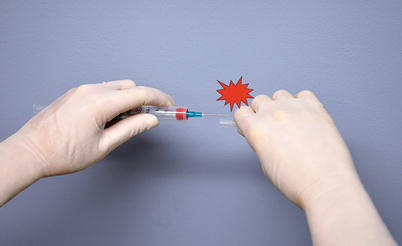
Fig. 4.5
Recapping results in a stick! It is among the most unsafe practices and should be avoided
Solution 1
Do not recap needles.
Solution 2
For dirty needles and expensive product (i.e., Botox), use a scooping technique (Fig. 4.6).
Solution 3
For dirty needles that require changing, if possible, discard the uncapped dirty needle and syringe and draw up new solution with a fresh syringe. Avoid the inclination to “save material” if a needle gets clogged.
Solution 4
Recapping a clean needle is not considered a high-risk occupational exposure. The method in Fig. 4.4 can be used when recapping clean needles. Here, the needle cap and the vial function in the same manner.
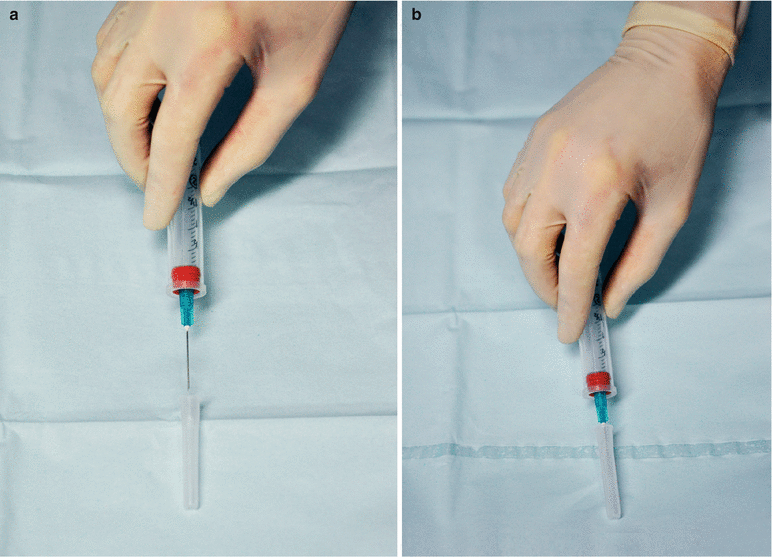
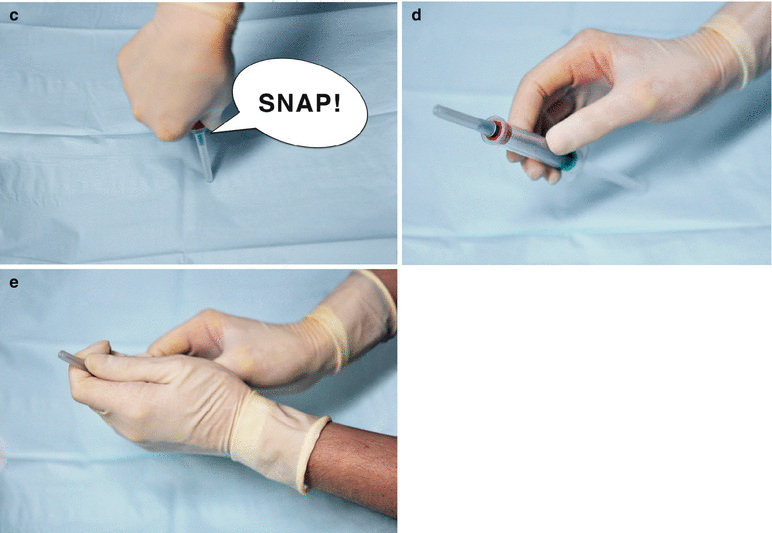
Fig. 4.6
Recapping a dirty needle in a safe way. (a) Place cap on tray. (b) Slide needle into cap. (c) Pivot cap on tray and press down, hearing/feeling the snap of closure. (d) Alternatively, raise the cap upward. (e) Pull down on the cap from its sides (do not press on the top as the needle can poke through the cap)
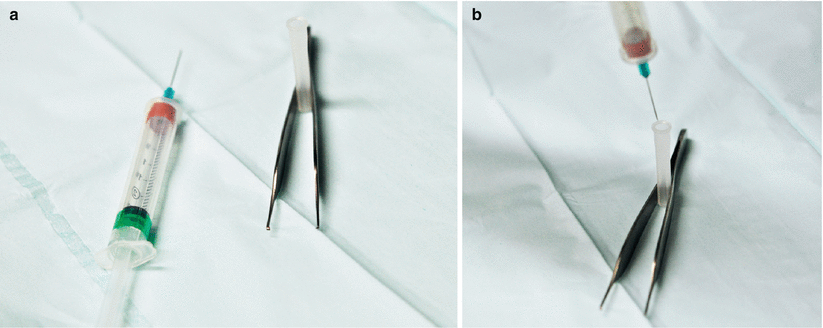
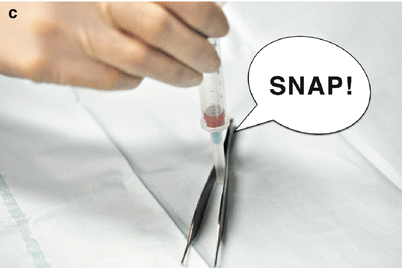
Fig. 4.7
Forceps method of recapping. (a) Place cap upright in forceps. (b) Sink needle into the cap. (c) Push until snap of cap closure is heard/felt
Removing a Needle from a Syringe Barrel
Accidents Happen When
Removing an uncapped needle from a syringe barrel.
Solution 1
Engage the safety device. Use a new needle.
Solution 2
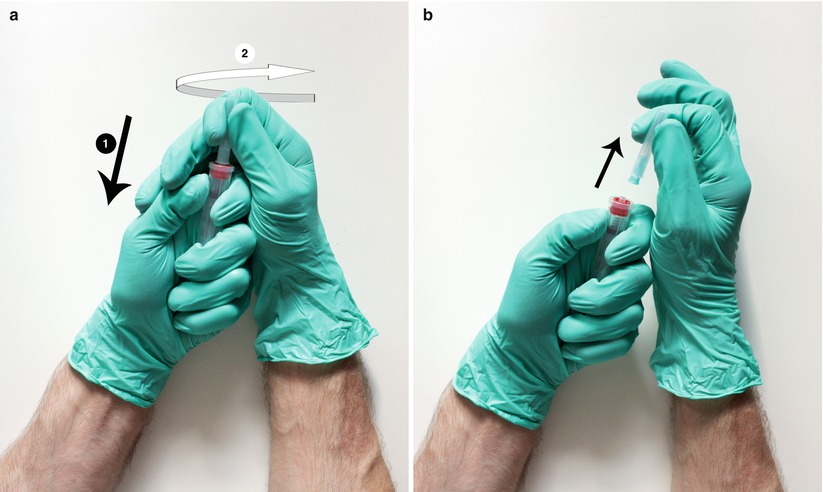
Fig. 4.8
Safe method of needle removal from a syringe barrel. (a) Snap cap into place (black downward arrow) (1). Only then, twist (white arrow) (2). (b) Once needle is off definitively, gently pull needle-cap unit away
Accidents Happen When
Attempting to remove the needle from the syringe without the cap snapped securely. A needle stick may occur when the cap is removed with the needle still attached to the syringe (Fig. 4.9).
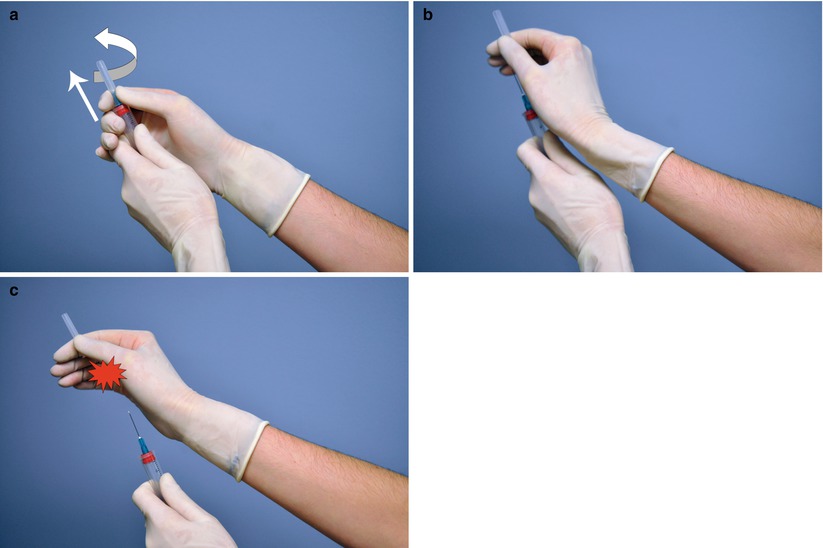
Fig. 4.9
Removing a poorly-capped needle from a syringe. (a) Twisting and pushing simultaneously may result in a stick. (b) Unintended cap displacement. (c) Needle stick or scrape of palm
Solution 1
Avoid the inclination to “save material”. Discard the needle and syringe and draw up new solution with a fresh syringe.
Solution 2
Only remove a needle from a syringe when the needle cap is confirmed to be locked into place (Fig. 4.8). Motions must be VERY deliberate and slow.
Needle Safety Devices
Accidents Happen When
Using a sharp with an unfamiliar safety mechanism.









